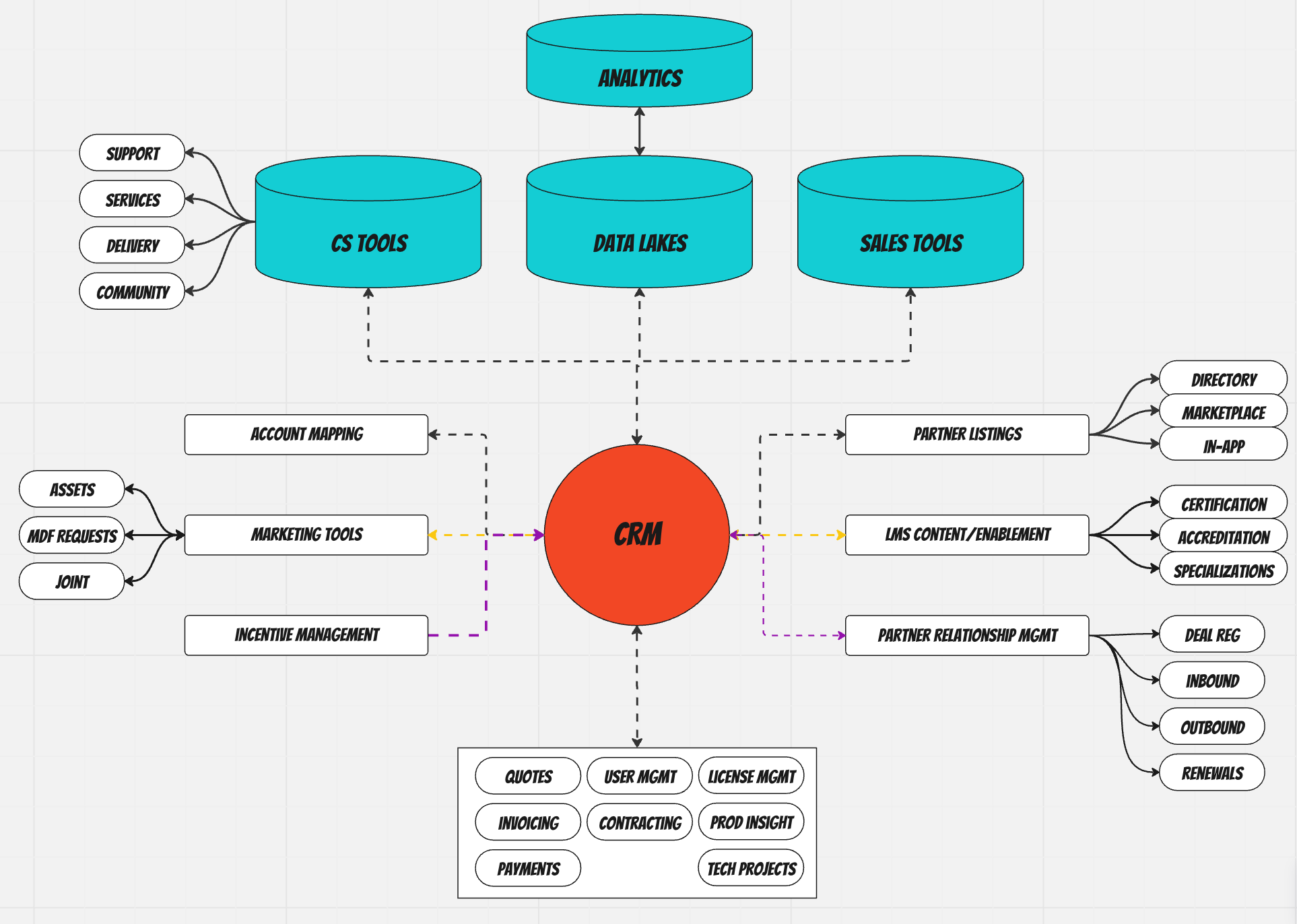One of the main challenges for any Partner Ops professional is the need to create something out of nothing in a tool that is inherently not suited for actually doing their job.
To put it another way - your CRM is overworked.
CRM at the center
Here’s what it might look like for a lot of companies. This is honestly a really clean example to help illustrate the point.
If it was really this clean, things might be okay overall, but there are still inherent problems. Frankly speaking, lots of companies lack the data lake and an analytics layer, causing even more stress on your CRM as you try to set up trending reports with custom objects, etc.
 This actually looks a lot cleaner here than in real life because it doesn’t consider how much process is utilized to consolidate this data within the system.
This actually looks a lot cleaner here than in real life because it doesn’t consider how much process is utilized to consolidate this data within the system.
Your IT team, or Systems Team, or PartnerOps professional sets up multiple integrations directly into the CRM. Each comes with a managed package and integration features for working inside the CRM that is often overlooked the majority of the time (from my personal experience and stories from the field).
Heavy customizations are needed to either work with, mitigate, or avoid those custom packages and objects to create some kind of standardized reporting effort that aligns with whatever has already been built. Maybe they have dedicated user interface guidance, workflows, etc. Often they don’t.
It’s a constant, never-ending, frustrating cycle of trying to move partner data from one point to another so that Partners, Colleagues, and Customers all have what they need to keep working.
CRM platforms were originally designed to handle approximately zero (0) percent (%) of this workload.
So why are we still asking it to?
Data sync + partnership management
In the age of advanced ETL, synchronization tools, data lakes, full-time data engineers, and an ever-increasing range of partner technology, there is absolutely no reason to continue to push Partnership teams and Partner data through the CRM as a matter of course or necessity.
What if you could instead have something that looks more like this...
 Partnership teams, with the right prioritization and synchronization tools, can live outside the CRM and still share all necessary data within the organization.
Partnership teams, with the right prioritization and synchronization tools, can live outside the CRM and still share all necessary data within the organization.
I’m not saying this is a perfect model - it’s bound to have its own issues as it gets stood up - but the benefits could be profound:
- Partner teams get their own engagement layer with all the necessary data for managing their partnerships.
- Integrations are driven through Synchronization as opposed to directly in the CRM, creating more flexibility for technology shifts and testing. Imagine being able to stand up new partner tech without ever needing a signoff for integration because it will never touch your ’core’ system? #freedom
- Deliver the right partner data to the right teams at the right time in the right place. No more trying to make one platform do all the work.
- Control data at the point of synchronization with Partnership owned workflows, rhythms, and rules of engagement.
- Potentially wrap your partner tech in the same experience layer to standardize access, logins, and engagement under a unified banner.
The wrap up
This week it’s really about delivering a single question: why are we still making Partnership teams work exclusively from a technology platform that doesn’t do anything for them?
I’m personally coming up with fewer reasons. Every. Single. Day.
If you’re interested in building this - or maybe letting me - let’s talk!
Prefer to listen? Check out Aaron’s podcast version of this post
Drop the CRM - PartnerOps Partner
-




